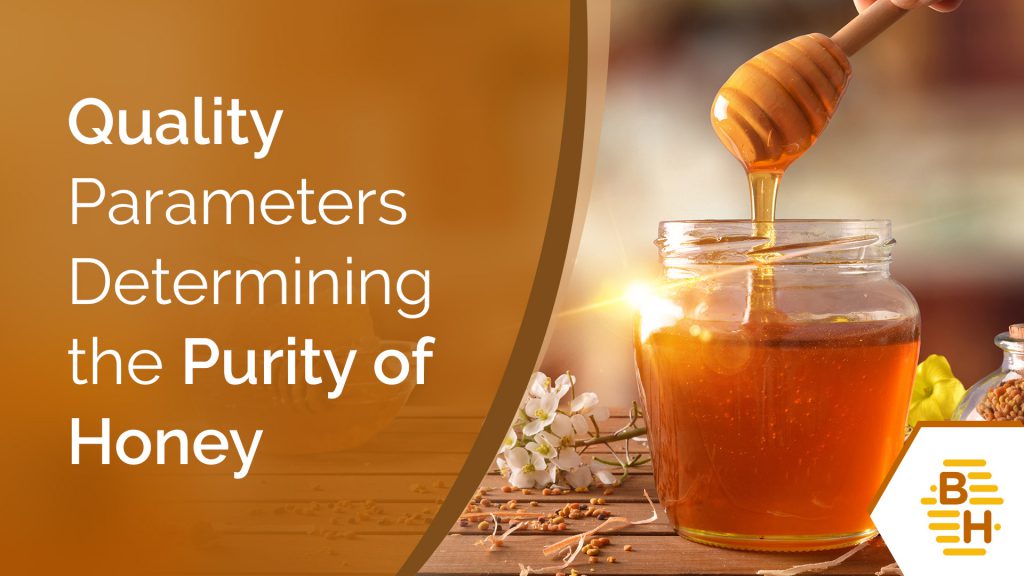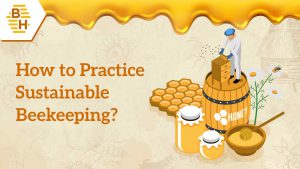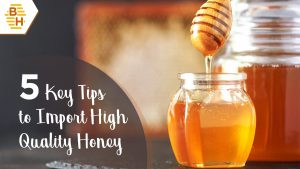Honey is an important commodity with a huge demand the world over. The benefits of honey are widely known, and the innumerable medicinal properties make it a must-have in every household, especially during the ongoing pandemic as it is known for boosting immunity. In 2018, the global honey market size was valued at $8.4 billion and it is expected to reach $9.79 billion in 2020. A key reason for the rising global demand is consumer preference for a healthy and nutritious substitute for sugar. The variety of nutrients, vitamins and minerals found in honey as well as its anti-inflammatory, antibacterial, antimicrobial, weight management and antioxidant properties are also major reasons influencing the growth of honey’s market size.
The demand for raw honey is also witnessing an upward trend. More and more people are now opting for raw honey as against choosing the commercial variety which may lack certain health benefits. A number of raw honey suppliers are collaborating with beekeepers to fulfill the demand for unprocessed honey around the world.
Raw Honey vs. Pasteurized Honey
Pasteurized honey undergoes a process of heating at high temperatures that can destroy its natural enzymes and yeast. This process may also result in honey losing the natural antioxidants and nutrients, thus resulting in a loss of its medicinal properties. Raw honey, on the other hand, comes intact with all the nutrients, vitamins, amino acids and minerals as it is packaged straight out of the honeycomb. It also contains close to 30 different types of bioactive plant compounds, also known as polyphenols, which act as antioxidants responsible for a number of health benefits.
Commercially available pasteurized honey may also lack bee pollens, traces of which can be found in raw honey. Bee pollens are a great source of nutrition containing over 250 types of antioxidants, micronutrients and essential fatty acids that are linked with a number of health benefits. Overheating or ultrafiltration can lead to honey losing bee pollens. Another major difference between the two varieties is the addition of artificial sweeteners. Pasteurized honey is more likely to be adulterated with sugar or corn syrup. Some studies conducted over the years have proved that raw honey is likely to be more beneficial than the regular pasteurized version.
Factors Influencing the Quality of Honey
The process of pasteurization, however, is not the only factor that dictates the quality of honey. It depends on a number of factors including the use of chemicals and pesticides, pollution, harvesting practices, surrounding environment, the health of the bees, apiary hygiene and much more. Some of them are as follows:
Location: The location of the apiaries is paramount as the bees depend upon the flora of the region to produce honey.
Chemicals: Excessive use of chemicals or pesticides can be lethal to honeybees and may also trickle down into the honey.
Hygiene: Maintaining hygiene in the hives as well using clean equipment for harvesting is also crucial to the health of the bees and in turn to the quality of honey.
Temperature: It is important to maintain the ideal temperature while extracting, storing as well as transporting honey as prolonged exposure to heat can destroy enzymes and lead to the decomposition of simple sugars present in it.
Filtration: Honey may also need to be filtered to get rid of undissolved substances like wax particles or brood, however ultrafiltration should be avoided to keep the pollen particles intact. Poor extraction or filtration techniques can impact the consistency and texture of honey.
Harvesting Techniques: Employing wrong or unethical harvesting practices may also lead to the presence of foreign matters in honey, which can have adverse effects on its flavor or shelf life.
10 Important Physicochemical Parameters
Physicochemical characteristics of honey are quality indicators for the different varieties and need to be maintained by natural honey suppliers for quality assurance. Some of the parameters that play an important role include:
1. Moisture
The ideal moisture content in honey is about 17.8% and it should be strictly below 19%. Honey is hygroscopic and tends to attract moisture if left in an open container for too long. Incorrect harvesting techniques and storage practices can alter its moisture content, therefore shortening its shelf life.
2. Reducing Sugars
Honey contains a number of reducing sugars, the percentage by mass of which should at least be 65%. Glucose and fructose are major components, while maltose and sucrose are found in relatively less quantities. The fructose/glucose ratio should not be less than 0.95%.
3. pH
Honey is acidic in nature as it contains organic acids to protect it from microbial spoilage and its ideal pH value should be anywhere between 3.4 and 6.1. Ph can influence the stability, texture as well as the shelf life of honey.
4. Ash
Ash is generally used to estimate floral origin of honey as it mainly depends on the chemical composition of nectar. The quantity of ash in honey is very low, with the maximum limit of percentage by mass being 0.6%.
5. Free Acidity
Free acidity affects the quality of honey and an essential parameter determining its deterioration. Free acidity of up to 50milli equivalents acid per 1 Kg of honey is the ideal composition. The maximum acidity expressed as formic acid percentage (by mass) should be 0.20%. Its natural acidity increases when the honey gets older, deteriorates due to fermentation or is harvested from honeycombs with Propolis.
6. Hydroxy Methyl Furfural (HMF)
HMF forms when the fructose present in honey breaks down due to acid and is an indicator of storage and heat changes. It is thus used to determine the purity of honey. The breakdown of fructose may increase exponentially during prolonged exposure to heat. HMF is naturally present in honey, but the permissible amount of HMF in honey is 40mg per Kg.
7. Specific Gravity
The specific gravity of honey should ideally be in the range of 1 to 1.4 at room temperature. It can be used to detect adulteration in honey in correlation with the moisture content as it decreases if the water content in honey increases.
8. Optical Density
Optical density is used to assess mainly the color of honey as well as its freshness. The fermentation of honey after it is stored for too long may cause the optical density to increase, causing its color to get darker.
9. Electrical Conductivity
Electrical conductivity is also important for the authentication of honey. It can alter based on the amount of pollen present in honey. Ideally, it should not be more than 0.8mS/cm.
10. Pollen Count
Pollen count in honey can be analyzed for the authentication of honey flavors. Unifloral honey contains more than 30,000-40,000 pollens of a particular variety of plant per gram of honey, on an average.
Determining the Purity of Honey
The purity of honey largely depends upon the major physicochemical parameters which need to be in the permissible range to ensure a longer shelf life and presence of components which lend the various medicinal and healing properties to honey. Adulteration is a major problem that can heavily impact the quality of honey. The analysis of these quality parameters can help companies who buy honey in bulk to ensure that the honey they are obtaining fulfills the required parameters.




